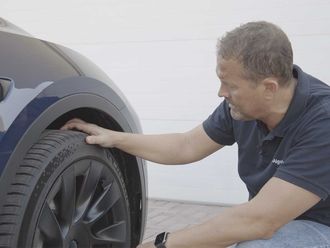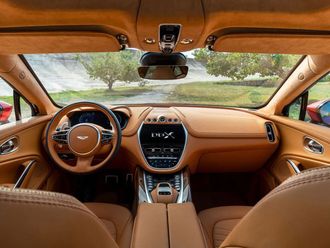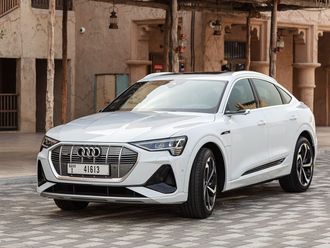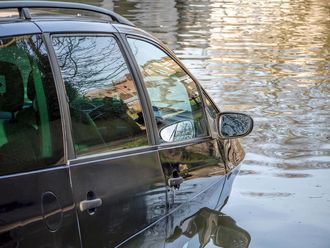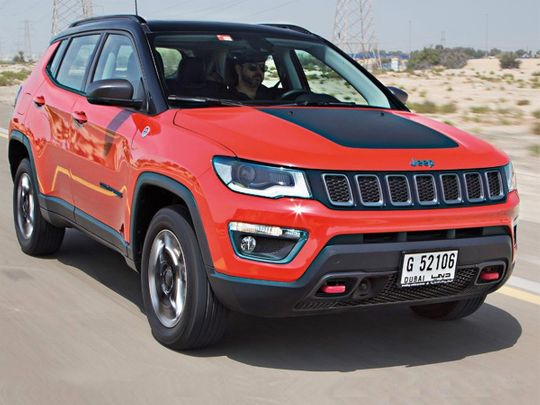
They’re like chalk and cheese. The first generation Compass was a wimpy, weird looking front-wheel drive disaster. Chrysler bigwigs clearly didn’t have their thinking caps on back then in 2007 as what they conceived was an ill-proportioned compact crossover that made a mockery of the Jeep badge.
Based on the Dodge Caliber, the Compass had a wheezy 2.4-litre motor mated to a CVT and would just about make it up the gentle ramp to the mall car park. You wouldn’t dare take it off-road, a little wet weather presented enough of a challenge. They chased a slice of the burgeoning crossover pie but got it horribly wrong. Fortunately, the second generation Compass has been injected with style and character to help right all those wrongs and isn’t just adept at tackling the rough stuff, it also doubles up as a very decent family hauler too. It’s definitely worthy of the badge now and here’s why.
The smaller sibling to the Cherokee off-roader uses a global platform shared with the baby of the family, the Renegade, and is offered in several trims. The most rugged is our tester, the Trailhawk, which retails for Dh122,000. This top of the range variant rides on 17in polished aluminium wheels with all-terrain tyres, has an Active Drive Low four-wheel drive system with 20:1 crawl ratio, Selec-Terrain traction control system, off-road suspension, hill descent control, skid plates, Ruby Red tow hooks and a black decal on the bonnet. Not that the latter would have any effect on its off-roading ability of course (it does give it an aggressive touch...) but whether owners of the Compass will ever venture deep enough off the beaten path to ever put those features to use is anyone’s guess.
It would be a shame if they didn’t because this Trailhawk is ever so capable. That ‘Trail Rated’ badge is certification by Jeep that the Compass has passed standards set for traction, water fording, maneuverability, articulation and ground clearance. It has an 8.5in ground clearance and 30.6-degree approach and 33.1-degree departure angles along with a wading depth is 480mm — all very favourable and when you combine that with its low-range, lockable 4WD system; you probably can ‘go anywhere’ in this one. Even though it’s pretty hefty at 1,648kg, it still manages to feel rather lithe and despite the extra ride height it is able to tackle the urban jungle not only in comfort but with confidence.
However, the ride can be a little harsh but then again this is a Jeep, not a Jag; you should expect a bumpier ride than an F-Pace. Present it with dunes and lots of golden sand and it really shines. Sure, it’s no Wrangler but its capabilities cannot be questioned even though the naturally-aspirated four-pot only makes 180 horses and 237Nm of torque. Indeed, the latter isn’t achieved until 3,900rpm and to get there you have to get stuck into the throttle.
Around town and on the highway, there are moments when you’re wishing for a tad more power (it can struggle at getting up to speed with faster moving traffic and overtaking manoeuvres) while the 0-100kph dash takes over 9 seconds. It’s no dragster then but it makes up for its lack of low-down pulling power with a very smooth shifting nine-speed automatic which directs power to all four corners.
In these frugal times, it’s reassuring to read Jeep’s fuel efficiency claims of 9.5 litres per 100km which are well above some of its competitors and it manages that decent figure without having to resort to a horrible CVT which some of its rivals are hampered with.
The electrically assisted steering is quite light which makes manoeuvring the Compass in tight spaces a breeze but when you drive a little too enthusiastically it displays some body roll due to the raised ride height — however when coasting along it’ll hang on nicely with predictable SUV-style characteristics. It affords plenty of room for five adults inside the very well-built cabin which is bathed with natural light via the full length sunroof. It’s now far more premium than ever what with its supple leather seats, a leather-trimmed steering wheel, lots of red touches and ambient lighting.
The rear bench splits with a neat centre armrest that folds to give access to the cargo area and the boot, which offers 438 litres of cargo capacity that expands to 1,251 litres when you fold the second row, has a false floor that you can drop it to reveal a 16cm deeper area in total. Another of the highlights of the smart interior is the soft-padded dash and you even get a choice of 5.0, 7.0 or 8.4in touchscreens with the UConnect infotainment system which is as good as always.
Overall, the Compass offers a refined ride, impressive off-road ability and a spacious and well-equipped cabin but by retaining an element of ruggedness helps set it apart from all of its rivals.



